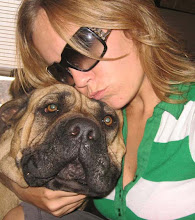When King William III (1650 to 1702) and Queen Mary II (1662 to 1694) ascended to power in 1689, the toy spaniel’s popularity waned, because the new monarchs preferred Pugs and other short-faced breeds recently imported from Asia. The Cavaliers endured in and around certain country estates, most notably at Blenheim Palace (home of John Churchill, the 1st Duke of Marlborough). The Blenheim variety of Cavalier King Charles Spaniel — a white dog with chestnut markings — was favored by the Duke of Marlborough, and one legend explains the origin of the desired lozenge (diamond-shaped) mark on top of the toy spaniel’s head.
One evening, when the Lady Marlborough was particularly anxious about her husband during the war, she sat up all night with her favorite female Cavalier, which was about to whelp a litter of puppies. The legend says that in her anxiety, she continually stroked and pressed on the head of her pet, and when the puppies were born, they all carried her thumbprint on their heads. This mark, called the Blenheim spot, is still desirable in the Blenheim variety of the Cavalier King Charles Spaniel today.
In other parts of England, the toy spaniel evolved over the next few centuries to look more like the Asian breeds favored by William and Mary: shorter face; undershot jaw; domed skull; and larger, more protruding eyes. “Whether Pugs cross-bred with the little spaniels or whether shorter-faced spaniels were imported from Asia, we don’t know for sure, but the toy spaniel began to develop a much shorter, upturned nose,” says Cavalier breeder Barbara Garnett Wilson of Nordland, Wash.
This flatter-faced spaniel evolved to become the English Toy Spaniel (called the King Charles Spaniel in England). But what happened to the longer-nosed, flatter-skulled spaniel so beloved by the European aristocracy of centuries past? Where had it gone?
Wednesday, December 3, 2008
The Evolution of the Toy Spaniel
Subscribe to:
Post Comments (Atom)

No comments:
Post a Comment